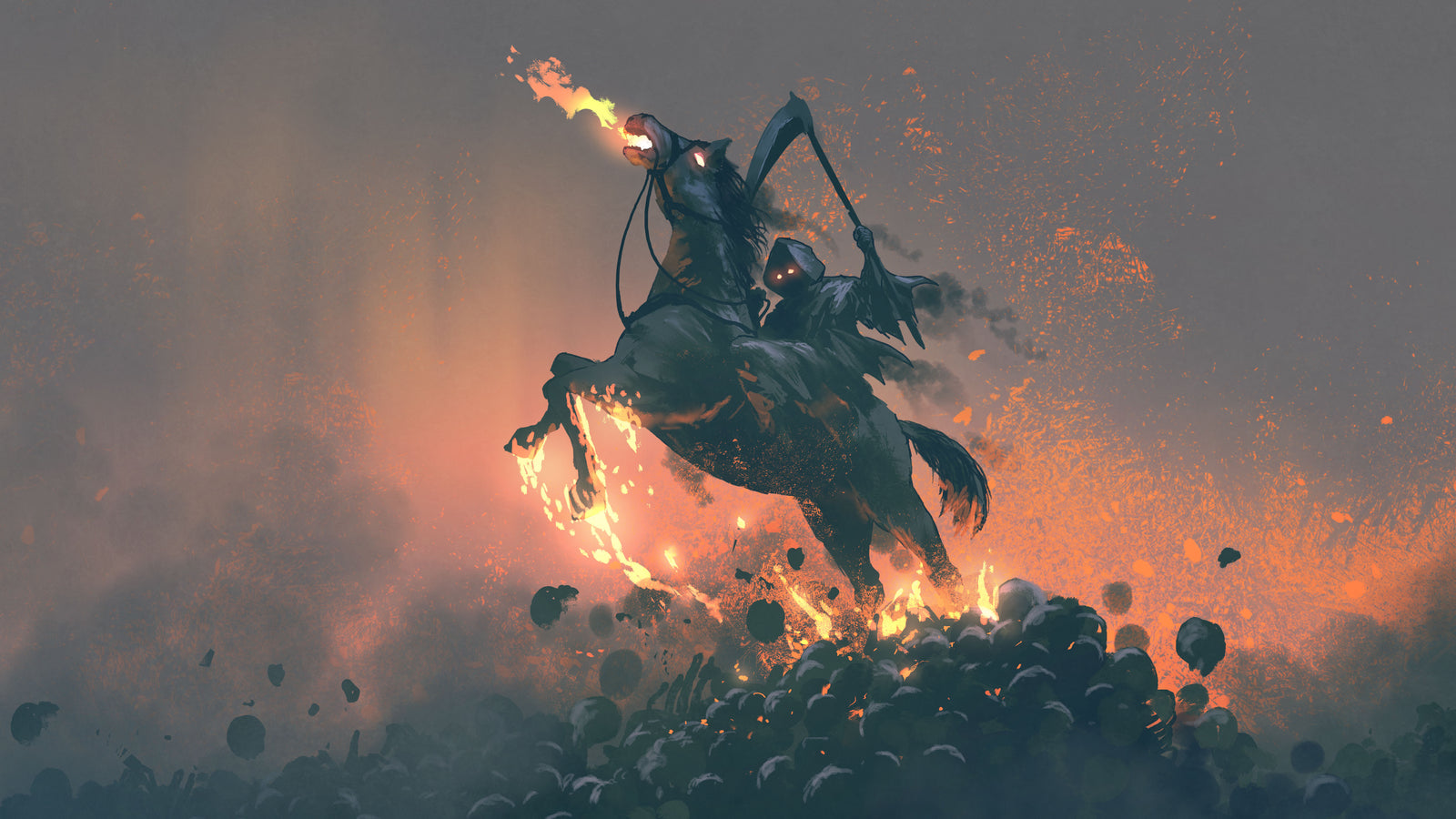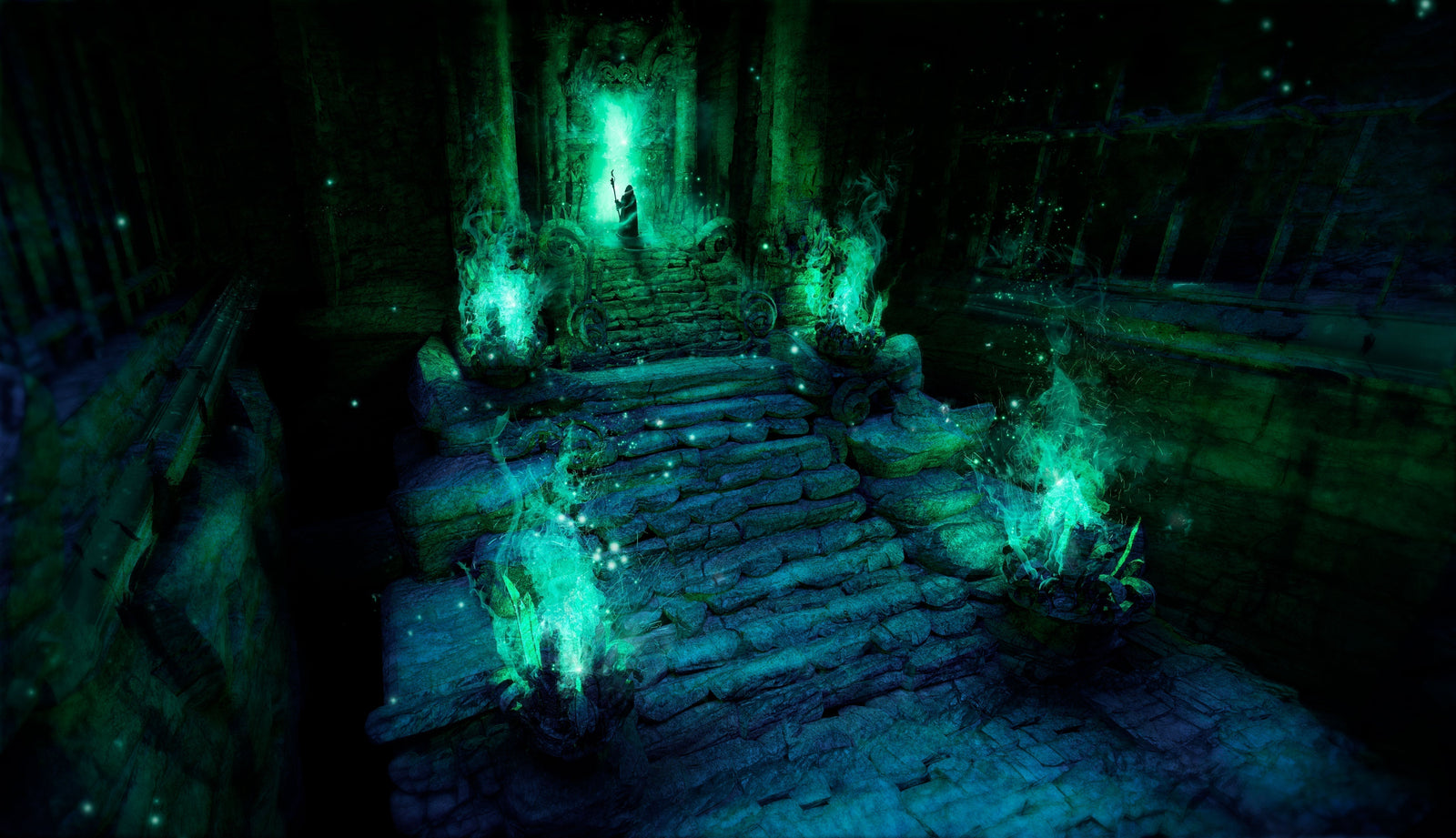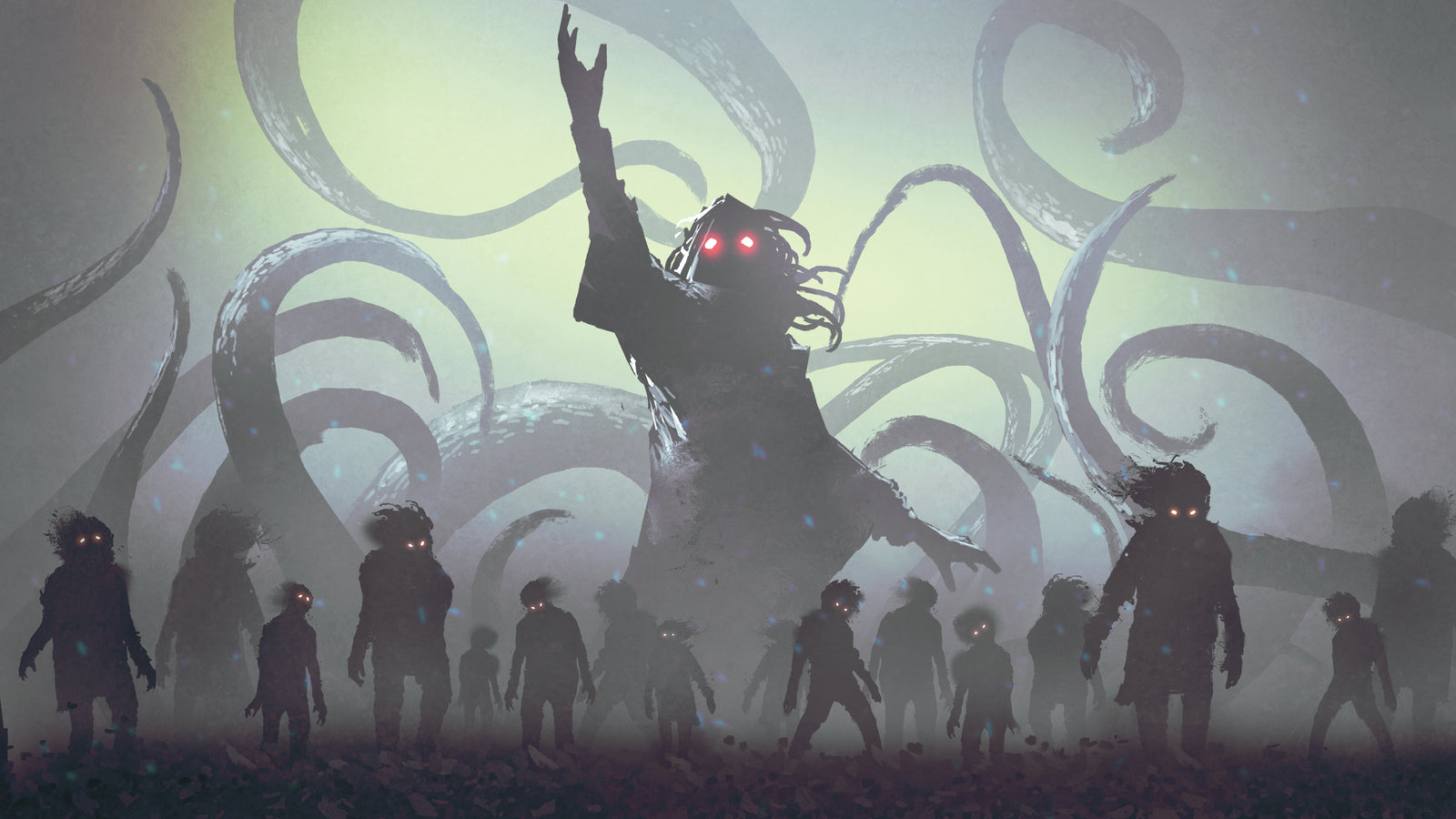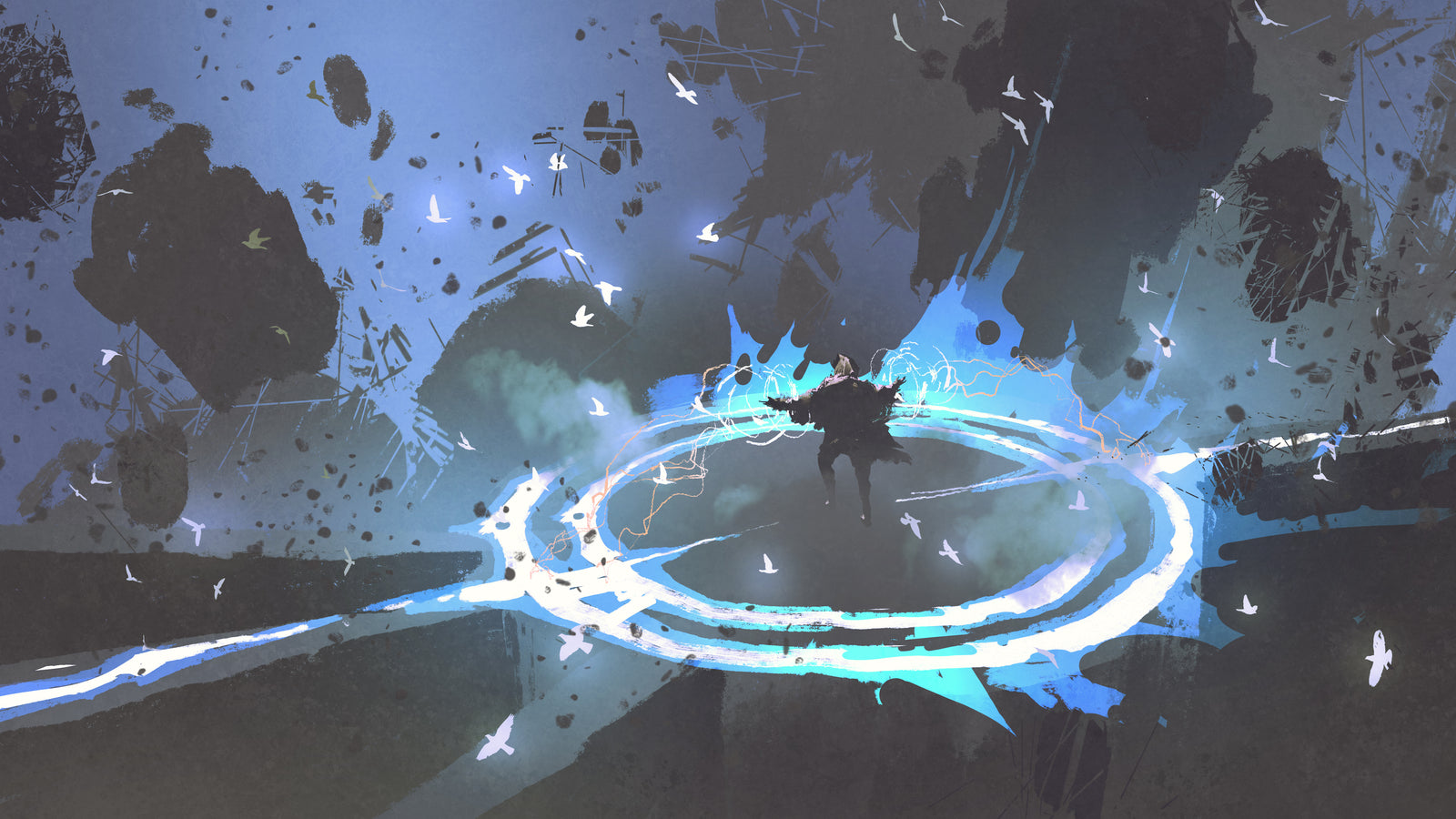Your Cart is Empty

How To Design Exciting D&D Encounters
November 08, 2022 6 min read
In this article, I explain how to design D&D encounters to make them as fun and exciting as possible.
There's no question that encounters are one of the most important parts of Dungeons & Dragons.
At its most basic level, D&D is simply a series of connected challenges (encounters) the characters try to overcome.
Without encounters, there are no adventures. Without adventures, there are no campaigns. Encounters are the fundamental building blocks of everything else!
Because of this, we should make the best encounters we can for our players. If we design engaging encounters, those encounters will go on to fuel excellent adventures and campaigns over time.
Exciting D&D encounters have these four elements:
1. Enticement: a reason to engage with the encounter.
2. Pressure: a reason to maintain momentum and finish the encounter.
3. Interaction: interesting things to do during the encounter.
4. Consequences: meaningful results from the encounter.
This shortens into the word EPIC to help you remember.
So, read on as I break down each of the four elements and explain how to implement them in your own encounters!
You can also scope out the livestream video at the end of this article where I demonstrate how to do this method in an actual one-shot adventure.
Let's start with element number one: Enticement.
If the characters don't have a reason to engage with an encounter, they won't bother.
Imagine a situation you've set up where an invisible assassin is lying in wait for the characters inside an otherwise empty, uninteresting room. The assassin will launch a surprise attack as soon as the characters have crossed over the threshold and turned their backs to the door!
But what if the characters don't see any good reason to enter the room?
The assassin is invisible and totally silent, after all. The room itself is nondescript, empty and devoid of any signs of treasure or things to do. At best, one character might look inside for a secret door.
While the empty room might seem realistic (wouldn't an assassin want a totally innocuous place to hide?), the room's empty and boring nature is probably not going to convince anyone through the door.
Remember that characters are primarily motivated to seek out treasure, combat, and interaction with NPCs. Conversely, they try to avoid things that look like traps or wastes of precious time.
So if we want the characters to enter the room with the assassin and engage with the encounter, we must entice them inside!
There needs to be something interesting to look at or do. Perhaps some obvious treasure glints on a dusty altar. Maybe there are strange marks on the wall, or fresh tracks on the floor, or there's a faint outline of a secret door in the dimly lit corner. Maybe there's a bound and gagged NPC hanging over a pit of acid, or a gurgling fountain with oddly colored water, or a weird clicking sound!
Whatever the enticing element is, it should tempt the characters in. Don't over-explain it from the start; if the characters enter the room, they can learn more by investigating.
At that point, the assassin will be in a position to attack.
And so, we've enticed the characters in! Now, how do we make sure the encounter is exciting?
For this, we need our second element: Pressure!
Pressure is something that forces the characters to act and keep up the momentum so the encounter doesn't become boring.
Consider all the action movies that involve a ticking time bomb. Without that bomb, the heroes wouldn't have to rush around and take big risks! They could spend a week diffusing the bomb with a remote-controlled robot, yawning and sipping coffee in their perfectly safe bunkers.
Not much of a movie, eh?
What we want is action, which demands pressure! Time pressure works really well, but there are other forms of it, too — resource loss (like slowly draining HP), NPCs getting into more and more danger, an increasing risk of madness over time, or even the enemy becoming stronger the longer the characters wait.
The important thing about pressure is that the players need to be aware of it. Not necessarily the characters, mind you, but the audience of the game itself; the people sitting around the table.
This goes back to the action movie example. Although the hero may not know where the ticking time bomb is, or even that it's present, the audience does. We watch in growing horror from the front row seat as the bomb's timer counts down, or Jaws swims closer, or the murderer creeps up behind the babysitter!
If the audience didn't know about the pressure, it wouldn't have any impact at all. So make sure your players are aware of it, even if their characters aren't.
Finally, make sure you keep the pressure varied between encounters (don't always use the same type), and don't always have it be full-throttle. There needs to be some ebb and flow or else the constant, high-stakes squeeze gets exhausting. Save the big guns for the most important encounters.
Now, we've used enticement to get the characters into the encounter, and pressure to make sure it has momentum.
But that still leaves us with a question: How do we make the encounter fun for the characters to engage with?
For that, we'll go over the most critical part of the encounter: Interaction.
Interaction defines what the characters can actually do during an encounter.
Having a high amount of interactivity is better, because it means the characters can engage with more of the game world.
Having stuff to do seems like an obvious element to any encounter, but this is a nuance that often goes overlooked in encounter design.
A good encounter will have more than one or two things to do. Whether the encounter is exploring a dungeon room, talking to an NPC, or climbing a castle wall, our goal is to make sure the players aren't saying, "I do the exact same thing I did last round."
This means the dungeon room should have cool things to mess with. Water to jump into, buttons to push, loose flagstones to lift, chandeliers to swing on, vines growing with useful (or harmful) berries, magic runes swirling with latent power.
NPCs shouldn't be "one trick ponies." They should hint at things they want, change their minds, become impatient or curious, and transform over time based on what the characters say.
The castle wall shouldn't just be four climb attempts in a row. Snakes should hide in loose cracks, stone should slip away, guards should unexpectedly appear, a wind should kick up, a territorial crow should dive-bomb someone.
The possibilities are endless if you think in terms of variety. Give the characters more to do than just the surface, obvious things. Reward them for engaging with the environment or trying different strategies. Encourage different approaches in combat, such as ambushing, entrapping, intimidating, or tricking.
Stretch your mind to throw in a handful of options, and the encounter will come alive with a huge array of possibilities.
Once our enticing, pressurized, interactive encounter is nearing its end, the characters need a final element to cinch the deal: Consequences!
In short, what the characters decide to do during the encounter must matter.
It again seems obvious, but it's always important to self-check our encounter design to make sure we aren't forcing a specific outcome.
For example, if you have an NPC you don't want the characters to kill, what will you do if they attack that NPC?
Although it can be a hard pill for some Game Masters to swallow, the best thing to do is make the characters' decision to fight (and even kill) that NPC matter.
You may end up needing to alter the course of your adventure. But not doing so would be even worse. If the consequences of encounters don't matter, nothing matters. The characters would have no ability to shape the world. They wouldn't be doing encounters at all; they'd be passive participants in a script.
So don't use your Game Master powers to make that NPC into a retired 20th-level fighter. Unless there's a very logical in-game reason, the characters should not be surrounded by conveniently godlike NPCs, unscalable walls, or impervious monsters.
Remember what we said about encounters being the building blocks of everything. The fact is, if you do not have real encounters (conflicts with consequences), you are not playing D&D!
So approach your encounter design knowing that you need to allow consequences. Don't make an NPC too important to kill. Don't write a chase scene where the villain escapes no matter what. Don't hold back when a character makes a decision that leads to their death. Don't put giant eagles in your game world and then tell the characters they can't dedicate themselves to befriending one and riding it to Mount Doom.
Consequences are the gel that holds the rest of the EPIC system together. With these powers combined, you have a mighty tool at your disposal.
Don't forget to entice the characters into a situation and then create pressure to keep the excitement high.
Put some elbow grease into creating multiple things to interact with during the encounter, and make sure what the characters do matters in the end by embracing whatever consequences emerge.
If you leverage the four EPIC elements in your encounter design, you'll always have engaging challenges for your players. They'll be chomping at the bit to play in your games, and you'll be confident knowing you gave good thought and design to the material you're creating!
For a longer discussion and video walkthrough of this process, check out the recording below, which is Part 4 of Kelsey's livestream series, How To Write A D&D One Shot, Step By Step!
Header art by Tithi Luadthong / shutterstock.com
Also in Arcane Articles

How to Write A D&D Adventure: The Complete Guide
October 21, 2021 14 min read 6 Comments
So you want to write a 5E D&D adventure? Read on for the step-by-step process I've developed over the years for writing an action-packed D&D adventure with as little friction as possible.
Read More
Imagine First, Design Second
May 05, 2021 4 min read 7 Comments
Sometimes, I write a dud. Here's the story of how I recently wrote an adventure that went nowhere, and how I managed to learn something useful from the whole experience in the end.
Read More
Milestone Leveling vs. XP Leveling: Which is Better?
March 02, 2021 5 min read 1 Comment
The age-old debate of milestone leveling vs. XP leveling! Which one is better? Here we look at the pros and cons of both, plus an entirely new system that blends what I like about each method.
Read More